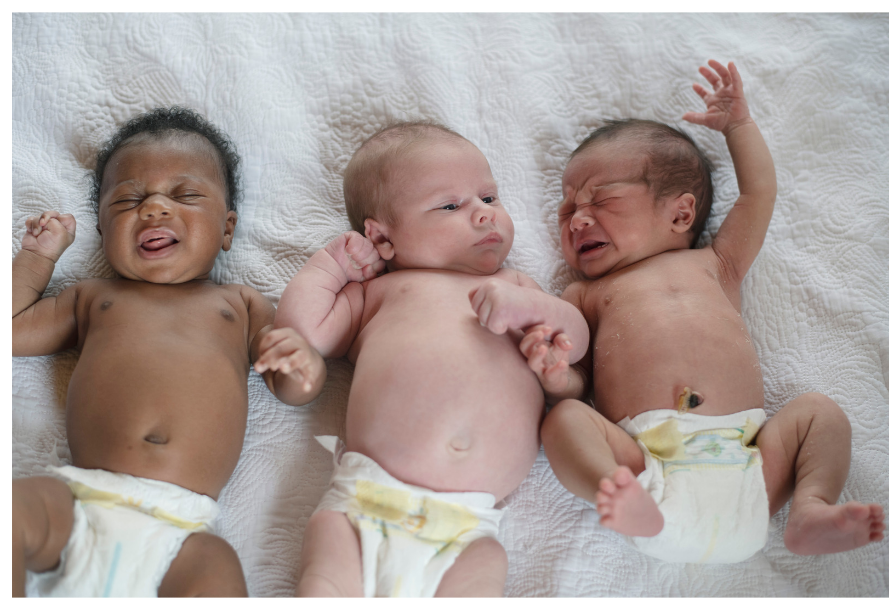
https://www.thewomens.org.au/patients-visitors/pec-week-24
By now, you’ll be noticing many changes happening to your body, both big and small. This week, we’ll explore these changes and get to know your baby.
Part 1: Changes to the pregnant body

During labour, you’ll feel sensations as the muscles in your uterus work to open your cervix, helping your baby turn and move down into the pelvis for birth.
These contractions become stronger, more regular, and more frequent as your labour progresses.
Braxton Hicks contractions, however, are typically a mild tightening of the uterus that often begins about halfway through pregnancy. You may not feel them in the early weeks, but they can increase in frequency and intensity the closer you get to the birth.
If this is your first pregnancy, you may not feel them at all. If you have more pregnancies, you may feel them earlier and more often.
You might feel:
• weak, uncomfortable tightening around your baby bump
• your abdomen tightening for 20 to 90 seconds
• aches or tightness on either side of your pelvis.


You’ll have felt your baby’s first movements by now. Called quickening, these little flutters are your baby’s kicking and punching movements. This often happens between weeks 16 and 25 of your pregnancy. If this is your first pregnancy, you might start feeling these movements closer to 25 weeks.
By your second and third trimesters, you’ll notice more distinct movements from your baby like kicks, stretches, jabs, and elbowing.
Paying attention to your baby’s movements is a simple thing you can do to help keep them safe and healthy. Regular movements are a good sign your baby is doing well.
It’s a myth that babies’ movements slow down or weaken towards the end of pregnancy.
If you’re concerned about your baby’s movements, go to the Women’s Emergency Care department as soon as possible. Don’t wait until the next day or your next hospital appointment.
You know your baby best - it’s your body and your baby, so trust your instincts.
For more information, visit The Centre of Research Excellence in Stillbirth website - Movements matter.
We’ll discuss baby movements more in Week 27.
Part 2: Getting to know your baby
During your ultrasound around 18 to 20 weeks, you saw your baby’s development and how freely they move around. You’ve heard their heartbeat and may have started to feel them moving. Soon, those close to you will also be able to share these experiences.
Your baby is aware of you too. They can hear your breathing, heartbeat, and bodily functions, as well as your voice and the voice of your partner or family. They’ll recognise and be drawn to these voices and sounds after they’re born, finding comfort and security in them. They’re the sounds of ‘home’ for your baby and lay the foundation of your bond.
At 24 weeks, you and your baby are already sharing a world and getting to know each other.
You might start imagining what your baby will be like - how they’ll look, what they might enjoy, and what their life will be like once they’re born. It’s normal to have hopes, dreams, fears, and even feel sad sometimes. Talking about these feelings with family, friends, or a trusted professional can be comforting and helpful.
Once your baby is born, you won’t have all the answers straight away. It will take time for both of you to get to know each other. Gradually, you’ll learn how your baby communicates through their body language. Being curious about their feelings and needs will help you learn how best to support them. This will build your confidence as a parent and help your baby feel secure in their world. Research shows this has a positive effect on their development.
Let’s look at how babies communicate and how their brains develop.


Babies start using their 5 senses to understand their world during pregnancy and after birth. This is the most developed part of their brain when they’re born.
Pay attention to your baby and learn their cues. This will help you work out what they need and respond in the best way. Good communication with your baby helps their development and strengthens your bond. It also supports their brain development.
If you have a partner or support person, get them involved in learning about your baby too.
Your baby’s senses at birth and in the first weeks:

When babies are born, they can see things within cuddle or breastfeeding range (about 15 to 25cms)
Babies:
• are attracted to black and white, but their ability to see colours and different shades develops over the following weeks and months
• can gaze steadily immediately after birth
• are drawn to human faces and can tell if someone’s happy or sad
• are more likely to look at or react to a face that moves or makes expressions – this is called mutual gaze. It supports their brain development. This interaction often leads to your baby responding to your actions, making your face their best toy in the first 3 months.

Hearing is the most developed sense at birth and continues to develop.
• Your voice is the most familiar. It’s recommended for your partner or support person to spend considerable time speaking with you before birth, so their voice becomes familiar too. If they’re away often, consider recording their voice and playing it regularly.
• Babies are attracted to sounds, especially rhythmic or repeated sounds. Lullabies, soothing voices, and gentle sounds may comfort your baby.
• Sounds and situations that make you feel positive can have a similar effect on your baby. Likewise, sounds and situations that bother you can have a negative impact on your baby. Keeping a safe and happy environment is important for your baby’s growth and development.
• After your baby is born, they’ll be offered a hearing test while in the hospital or later as an outpatient.

During pregnancy, babies are surrounded by amniotic fluid, kept at a constant temperature, and securely supported inside your uterus. They need a similar environment after birth.
Here’s how you can help your baby feel safe and comfortable.
• Gentle, loving touch helps release oxytocin, a bonding hormone.
• Babies feel pain just like adults and children.
• Babies have a startle reflex that lasts up to 12 weeks, so they need to feel supported either by being held, carried, wrapped, or worn in a suitable carrier or sling.
• Babies often cry when unwrapped for nappy changes, bathing, or dressing. They may prefer to be loosely wrapped with their arms together.
• In the first few weeks, your baby’s mouth and hands are very sensitive and have strong touch receptors, which help with breastfeeding.
• Babies are used to movement and find it soothing. Rhythmic patting and movement may remind them of your heartbeat.
• Skin-to-skin contact, with your baby naked on your chest, is important for both you and your baby. It:
- o helps your baby’s heart and breathing rates stabilise
- o passes good bacteria from you to your baby
- o makes it easier for your baby to adjust to being outside your uterus
- o encourages breastfeeding instincts
- o helps you and your baby communicate better
- o makes bonding hormones (oxytocin) for both of you
- o can reduce crying
- o is important for parents and significant family members.
Read our fact sheet, skin-to-skin care with your baby, for more information.

Babies start learning about taste and smell while they’re still in your uterus.
As they swallow amniotic fluid, they become familiar with your taste and smell.
• The amniotic fluid contains elements of your diet, and a natural sugar called sucrose. As a result, babies taste buds for sweetness are more developed, and they tend to prefer sweeter flavours
• Breast milk and your body odour also contain these same substances.
• Breast milk has a similar smell and taste to amniotic fluid.
• After the birth, the darker area around your nipples (areola) releases an oil that smells like amniotic fluid. This helps your baby find your breast. Babies who start their first feed on their own generally feed better overall.
Understanding what you and your partner or support person can do during pregnancy to learn about your baby may increase the bonding process after the birth.
For more information, read our fact sheet reading your baby’s body language.
We hope you have found this information helpful.
If you have any health concerns please talk to one of your health care professionals – midwife, General Practitioner (GP), hospital doctor, etc.
There will be more to read and learn next week.
Stay safe and well.